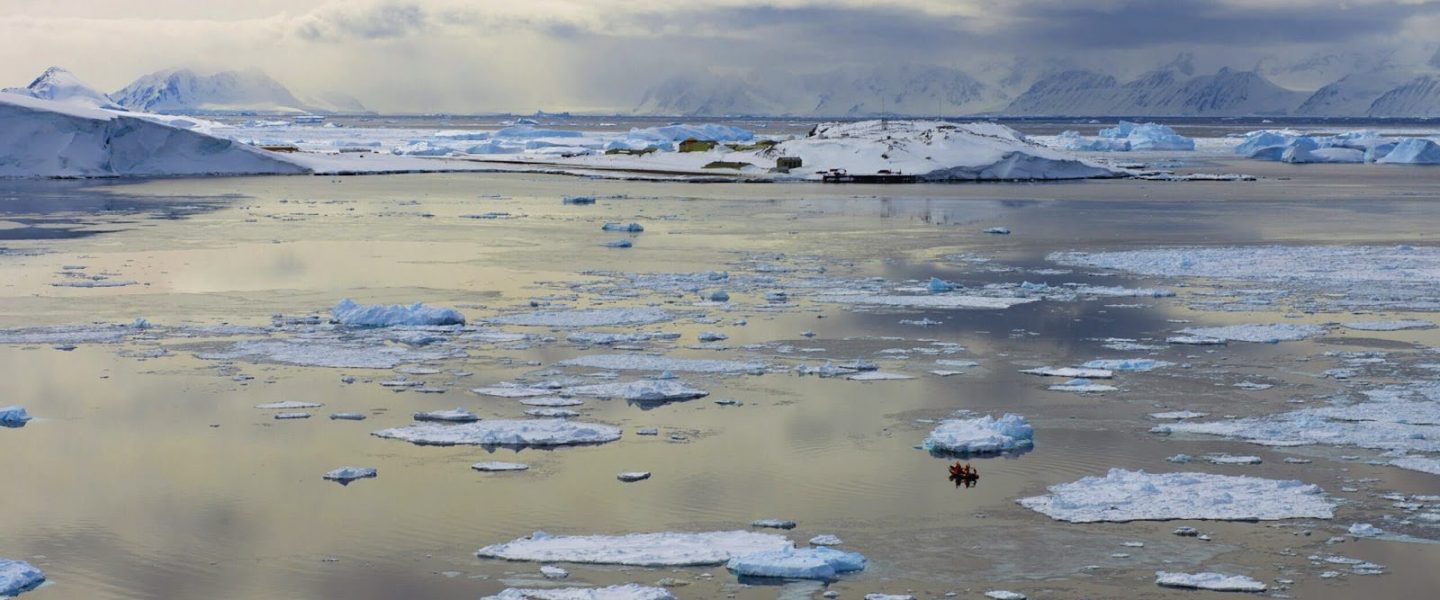“We now have direct evidence that this ice sheet suffered rapid ice loss in the past,” said a Cambridge researcher.
|
Listen To This Story
|
As European Union scientists confirmed that last month continued a worrying trend of historically high temperatures, UK researchers released a study on February 8 warning how fossil fuel-driven global heating could lead to catastrophic and rapid ice loss in Antarctica not seen for thousands of years.
The study, published by researchers at the British Antarctic Survey (BAS) and the University of Cambridge in Nature Geoscience, relies on an ice core from the West Antarctic Ice Sheet that is over 2,100 feet long.
“We now have direct evidence that this ice sheet suffered rapid ice loss in the past,” said senior author and Cambridge Earth sciences professor Eric Wolff in a statement. “This scenario isn’t something that exists only in our model predictions and it could happen again if parts of this ice sheet become unstable.”
“The very same processes we are seeing just beginning now, in areas like Thwaites Glacier, have played out before in similar areas of Antarctica and indeed, the pace of ice loss was equal to our worst fears about a runaway ice loss.”
Study co-author and BAS researcher Isobel Rowell explained that “we wanted to know what happened to the West Antarctic Ice Sheet at the end of the Last Ice Age, when temperatures on Earth were rising, albeit at a slower rate than current anthropogenic warming.”
“Using ice cores we can go back to that time and estimate the ice sheet’s thickness and extent,” she continued. The team measured stable water isotopes and the pressure of air bubbles in the core, and found that the ice sheet “shrank suddenly and dramatically” about 8,000 years ago.
“We already knew from models that the ice thinned around this time, but the date of this was uncertain,” Rowell noted, referencing estimates of 5,000-12,000 years ago. “We now have a very precisely dated observation of that retreat that can be built into improved models.”
https://twitter.com/BAS_News/status/1755607725361483808
Previous models also didn’t indicate how quickly the retreat happened. However, the team’s measurements showed that “once the ice thinned, it shrunk really fast,” said Wolff.
“This was clearly a tipping point — a runaway process,” he added. “It’s now crucial to find out whether extra warmth could destabilize the ice and cause it to start retreating again.”
University of Colorado Boulder glaciologist Ted Scambos was not involved with the study, but he called it “an excellent piece of detective work” and told CNN that its takeaway message is “the amount of ice stored in Antarctica can change very quickly — at a pace that would be hard to deal with for many coastal cities.”
CNN pointed out that the study contributes to mounting warnings from scientists about conditions in Antarctica:
For example, the Thwaites Glacier, also in West Antarctica, is melting rapidly. A 2022 study said the Thwaites — dubbed the Doomsday Glacier for the catastrophic impact its collapse would have on sea-level rise — was hanging on “by its fingernails” as the planet warms.
This new study adds to these concerns, Scambos said. “[It] shows that the very same processes we are seeing just beginning now, in areas like Thwaites Glacier, have played out before in similar areas of Antarctica and indeed, the pace of ice loss was equal to our worst fears about a runaway ice loss.”
As Common Dreams reported in October, a study published in Nature Climate Change found that the West Antarctic Ice Sheet — which contains enough ice to increase the global mean sea level by over 17 feet — faces an “unavoidable” increase in melting for the rest of this century.
“If we wanted to preserve it in its historical state, we would have needed action on climate change decades ago,” lead author and BAS researcher Kaitlin Naughten said at the time — while also stressing that “we must not stop working to reduce our dependence on fossil fuels.”
The release of that study preceded the 28th United Nations Climate Change Conference in Dubai. After COP28 ended in December with a final agreement that did not explicitly endorse a global phaseout of fossil fuels, scientists called it a “tragedy for the planet.”
Despite the heat that the United Arab Emirates caught for having a fossil fuel CEO lead the latest summit, COP29 host Azerbaijan plans to have an oil executive head the next one, scheduled for November. Azerbaijan also plans to boost its gas production by a third during the next decade.
The COP29 host is far from alone. Global Witness revealed last month that the oil and gas companies that signed a decarbonization pact at last year’s conference plan to burn through around 62 percent of the world’s carbon budget by 2050 — which sparked fresh demands for governments to stop caving to polluters and implement more ambitious climate policies.
This story by Jessica Corbett was originally published by Common Dreams and is part of Covering Climate Now, a global journalism collaboration strengthening coverage of the climate story.





